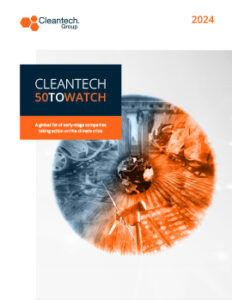Point Source Capture: Is it a Silver Bullet for Industrial Emitters?
$2.3T needed from now to 2050 — delayed deployment could cost double, even triple
Point Source Capture (PSC) technologies capture at the point of emission from industrial sources. These hard-to-abate sectors include natural gas, blue hydrogen, power generation, refineries, cement, iron and steel, chemicals, steam methane reforming, fermentation, and syngas producers. In 2022, these emitters produced 36 GtCO2 or 68% of total emissions.
PSC annual investments ranging from $60B-$140B totaling approximately $2.3T are needed through 2050 to meet net-zero goals outlined by the Paris Agreement (Energy Transition Commission). Generous estimates suggest that PSC can deliver a vital 2.5-4 GtCO2/year, under half of the 7-10 GtCO2/year needed to meet 2050 goals. The rest of the emissions will largely be captured via Direct Air Capture (DAC). The 2024 annual capacity is approximately 50 MtCO2/year, up from 40 MtCO2/year in 2023. Capacity will need to make an astronomical leap by 50x-90x per year.
The Current Annual Capture Capacity Trailing Behind PSC Net-Zero Goals, Massive Scale-Up Ahead

Sector decarbonization wherein CO2 is permanently removed from the atmosphere can be achieved via sequestration in geologic formations, rocks, or construction aggregates (the latter is typically a 60+ year lifetime). PSC can also improve overall carbon efficiency via short-term storage; however, this will not result in net carbon removal. This occurs when CO2 is utilized in fuels and chemicals like sustainable aviation fuel or plastics that will result in CO2 being reintroduced into the atmosphere or environment.
A Suite of Technologies
Various technologies have been developed for PSC that include capture via solvents, solid adsorbents, membranes, and cryogenic systems. Most begin to see cost-effectiveness at scales above 0.3-0.6 MtCO2/year.
Solvents are the most technically mature and will likely win the biggest market share for large-scale capture. Non-amine solvents claim a 20-30% reduction in OPEX and CAPEX. Solid Adsorbents are a high surface-area solid material, e.g., Metal Organic Frameworks (MOFs) with a selective affinity for CO2 in a gas stream. Membranes have a high affinity for CO2 and are generally cost effective at smaller scales and can be combined with MOFS, solvents, and more. Cryogenic systems are also emerging as a means to storing CO2 as a liquid that requires energy consumption approximately proportional to the amount of gas processed. Further processing may be performed before CO2 is utilized, transported, or stored.
Innovator Callout
- Carbon Clean developed solvents that can reduce the cost of CO2 capture from large-scale polluters by 50%. Its tech can also be used in existing gas treatment plants in the natural gas industry to reduce operating costs by ~30%.
- Svante, a multi-year winner of the Global Cleantech 100, uses MOFs via its VeloxoTherm™ process with rapid cycle-temperature swing adsorption.
- Ardent (fka Compact Membrane Systems) uses composite facilitate transport membranes to selectively capture greenhouse gases with high flux rates and low pressure.
Business Models and Market Dynamics
A lack of standardization and regulation around pricing necessitates government support such as the establishment of a carbon pricing system. For example, the U.S. and Europe are leading project development and have committed over $20B in capital grants and loans, meanwhile establishing carbon contracts-for-difference and procurement programs for high-value products like fuels.
Just last week, the U.S. Environmental Protection Agency ruled to enforce natural gas power plants cut or capture 90% of climate emissions by 2032. This rule sets a historic precedent that will force evolving carbon markets to be cost competitive for power generation players or risk cutting off power supply or raising costs for its customers to comply with new plant rules.
And various business models and carbon pricing structures are evolving in the private sector. For example, transport and storage projects have emerged that are not tied to a specific industry. Carbon capture hubs have become the dominant mode of deployment in which capture facilities are built in tandem to utilization, transport, and storage facilities that can also help drive down the end costs. Still, CO2 utilization will largely be driven by the costs of its end products, e.g., CO2 is utilized to produce urea at commercial scale at $300-$450/tCO2.
Without economic incentives or policy drivers, industry isn’t jumping to adopt urgently. Even further dissuading uptake is that the sectors requiring PSC most often lay at the higher end of the cost curve, i.e., cement, power, steel. Without PSC, we will be totally reliant on DAC that could double or even triple the capital expenditure required for PSC infrastructure, making PSC among the cheapest abatement options. In the case of cement, it’s the only option.
Furthermore, perceived project risks, investor distrust, high project costs, and over-anticipated CO2 demand have led to project pauses and delays, e.g., Shell and Equinor have both abandoned blue hydrogen projects. There’s also public pressure for the UK government to cancel over $1.3B investment in blue hydrogen as scientists question its viability.
2022 Venture Activity Soared, Overall Upward Trend

Over $1.7B in venture capital funding was raised across 111 deals since 2020. Venture activity skyrocketed in 2022 with over $925.4M raised across 15 deals of which four Growth Equity rounds made up more than half of total funds. This includes Svante’s massive $318M funding round from Chevron Technology Ventures and Temasek, among 12 others; Entropy’s $300M Growth Equity from Brookfield Renewable Energy Partners; and Carbon Clean’s $150M Growth Equity from CEMEX Ventures, Samsung Ventures, Chevron Technology Ventures, among others.
While 2022 is an outlier, the overall activity is trending upward. In 2023, $209M was raised across 10 deals including C-Capture that raised $12.4M from bp Ventures, Kiko Ventures, among others, for its pilot facility. Ardent raised $16.5M from Chevron Technology Ventures, Solvay Ventures, Technip Energies and others. As of October 2024, over $233M was raised across 7 deals including an additional $100M for Svante and a $30M Series A for Mantel to build a demonstration project for its molten-salt capture solution.
Buff López, Associate, Materials & Chemicals at Cleantech Group, and Erica Nemser, CEO at Ardent, discuss the critical role of point source carbon capture in reducing emissions from industrial emitters.



